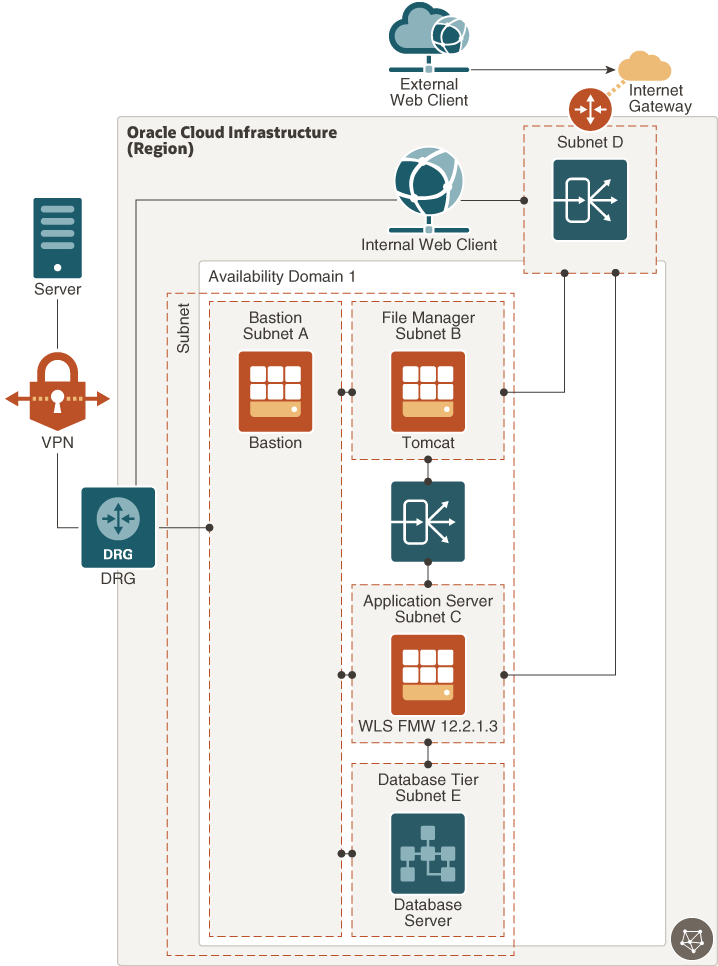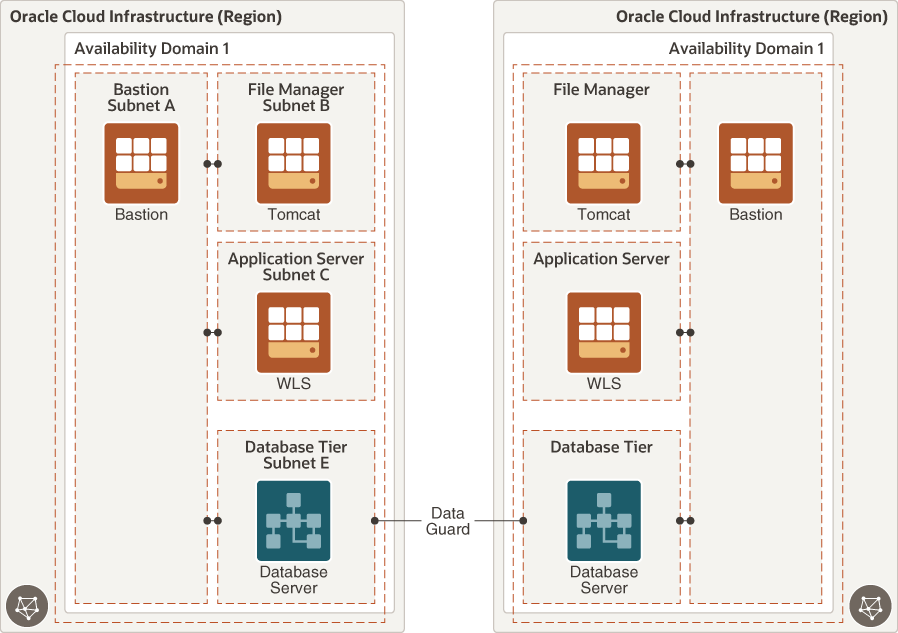About Deploying Oracle Agile PLM on Cloud
If your organization wants to develop, deploy, and/or update parts of an Agile Product Lifecycle Management (PLM) application in a faster, more agile way, instead of investing in building on-premise implementations, then deploy Agile PLM on Oracle Cloud Infrastructure.
Key Workload Requirements
The architectures that Oracle provides help you address these requirements:
- Designing for high availability and disaster recovery
- Deploying a secure architecture.
- Matching your high-performance and highly isolated network model.
- Deploying your application and database environments into the cloud.
- Maintaining visibility over costs and usage.
- Monitoring infrastructure health and performance.
Architecture for Deploying Agile PLM on Cloud
You can deploy Agile PLM in a single availability domain while ensuring high availability. Use this architecture when you want to ensure that your application is available even when an application instance goes down. The other available application instances in the availability domain continue to process the requests.
Oracle Agile PLM can be deployed on cloud in a multi-tiered architecture. The architecture consists of a virtual cloud network (VCN) with the bastion host, load balancer tier, application tier, and database tier. The tiers are placed in separate subnets of the VCN in a single availability domain.

Description of the illustration agile_plm_reference_architecture_high_availability.png
The Agile PLM application server can be set up in a standalone or clustered configuration. In the image shown, a standalone server is considered, which has only one Oracle WebLogic Server instance. All client servers and users connect to the application server either directly or indirectly. To permit traffic to the web server from the internet, you can create load balancers in the public subnet. You can access Oracle Cloud instances in the private subnet from your data centers by connecting through the dynamic routing gateway (DRG). The DRG is the gateway that connects your on premise network to your cloud network and you can enable communication between the two using VPN. You’ll also have to update the route table to enable traffic to and from the DRG.
The load balancer receives requests from users, and then routes these requests to the application tier. You can allow for redundancy (and scalability) by configuring multiple instances of the WebLogic server for the core application, Tomcat for File Manager, and RAC for database. You can augment redundancy through the use of fault domains so that you can continue accessing the application even if an instance goes down. All instances are active and receive traffic from the load balancer.
There's a private Load Balancer between File Manager and Application Server to distribute traffic to your application instances within a VCN. This service provides a primary and a standby instance of the load balancer to ensure that if the primary load balancer becomes unavailable, the standby load balancer forwards the requests. The load balancer ensures that requests are routed to the healthy application instances. If there’s a problem with an application instance, then the load balancer removes that instance and starts routing requests to the remaining healthy application instances.
The database server stores all product content and system settings and is placed in the private subnet. This database is accessed only by the application server. For performance and high availability requirements, Oracle recommends that you use two-node Oracle Real Application Clusters (Oracle RAC) database systems in Oracle Cloud Infrastructure.
Architecture of Agile PLM Disaster Recovery
Oracle Cloud provides Agile PLM implementations that ensure you can build disaster recovery (DR) into your deployment in unforeseen events that would require you to failover and still keep Agile PLM up and running.
The following image illustrates the reference architecture for deploying Agile PLM in multiple regions with high availability and disaster recovery.

Description of the illustration agile_plm_reference_architecture_high_availability_and_dr.png
Oracle Data Guard protects your database tier by replicating data across availability domains.